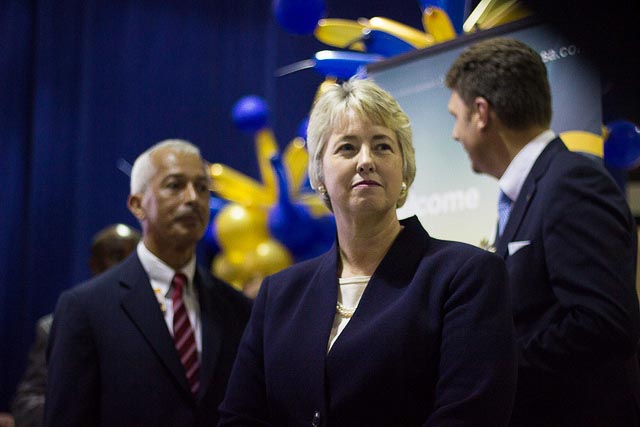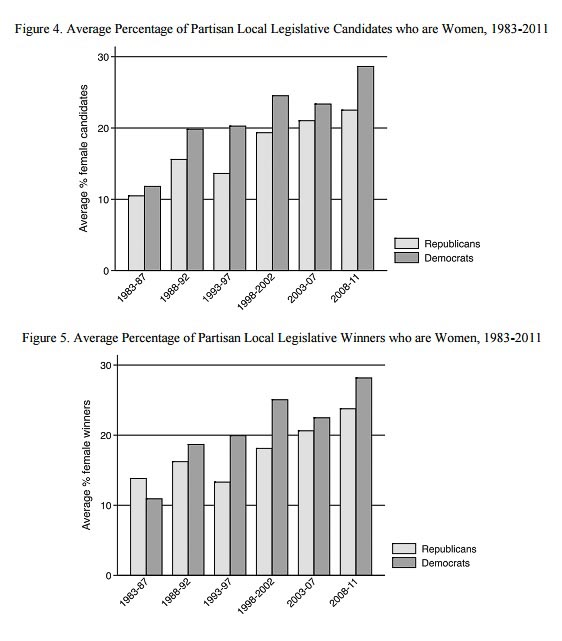Academic researchers and popular media have given considerable attention to the disproportionately low number of women serving in Congress. Women hold less than 20 percent of the 538 seats in the U.S. House and Senate.
Yet there’s considerably less discourse about the lack of women at lower levels of government – school boards, city councils, county supervisors, and the like. That matters, since those positions represent the farm system for federal office.
The imbalance in attention prevents analysts from understanding the nature of the federal government’s female underrepresentation, argue researchers Melody Crowder-Meyer, of Sewanee: The University of the South and Adrienne Smith at the University of Tennessee,
“This paper seeks to address the continuing gap in scholarly inquiry by examining where women run for and win seats on local legislative bodies throughout Louisiana,” they write, in a study published as part of the Kinder Institute’s Local Elections in America Project (LEAP), a collection of local election data made available to researchers.
The Study
The researchers sought to answer how local factors – socioeconomics, demographics, institutional and political characteristics – influenced where women run for and win seats at the city and county levels.
First, the researchers simply tracked how often women emerged as candidates in local elections and how often they succeeded, from 1983 through 2011.
They then analyzed those trends in greater detail to see how things like electoral rules, local political climates, professional and personal resources available to women in those jurisdictions, and context from the state level, related to the changes in local women’s candidacies.
The Findings
The simple descriptions of female participation in local races shows some clear trends.
First, women both run and win races more often now than they did at the beginning of the study period.
But women also make up a considerably larger share of candidates for and winners of city-level races than they do at the county level – and the gap has grown over time.
“It could be that the greater desirability of county-level offices means that potential female candidates anticipate that they will or actually do face stiffer competition from men when running for these coveted offices,” the researchers write.
That is, there’s a gap between female participation in races for city- and county-level offices because the greater political power at the county level creates either a real or perceived threat that those races will be more competitive.
But it might also be the case that at the city level, powerful or qualified women are more likely to know each other and therefore have networks that encourage their candidacies.
“To the extent that there are role model or recruitment effects, the denser social networks of smaller places facilitates these processes,” the researchers write.
The data also showed that women represent a larger share of candidates and winners among Democrats than they do of Republicans.
In their more complex analysis of the data, the researchers found support for their theory that female representation in the state level would influence the degree of participation and success at the local level.
“Women’s presence as local legislative candidates is driven, in part, by the broader electoral context in the state,” the researchers wrote.
They also found female participation in elections was to some degree presaged by how competitive the seat was in its previous election. They theorize that when one party has a stranglehold on a seat, party elites and officials aren’t encouraged to recruit candidates generally, and have less reason to seek out female candidates specifically.
“To our knowledge, this is the first attempt to investigate the competitiveness hypothesis using local level data so this finding is important and provocative,” the researchers conclude.
The Implications
One big takeaway from the study is that the decision makers within local and regional party systems that recruit and anoint candidates have a bigger role in influencing female representation in politics than typical voters.
More competitive seats produce more female candidates, because party leaders need to recruit harder to win those races, the researchers conclude.


